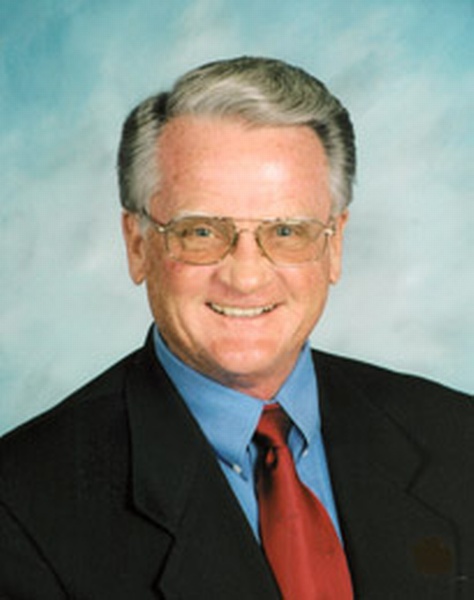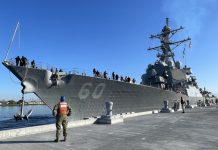The Cold War and America
By Loreen Berlin
It’s history now – the Cold War – lasting for decades between the United States and the then Soviet Union – nearly leading to a nuclear disaster.
Today, technology, along with Social Media and quick-turn-around film and or digital camera processing would perhaps tell a different story. However, when Lt. Col. USAF Photo Scientist Leroy Mills, Ret., served in the U.S. Air Force, things were much different. “I was a spy for a while for the United States,” Mills told those gathered during the monthly Cypress Chamber of Commerce Breakfast at the Residence Inn by Marriott in Los Alamitos. “We were known as the ‘Hollywood Air Force.'”
Mills, graduated from West Point Military Army Academy in 1964 and then was commissioned into the Air Force from North Carolina where he grew up, eventually making his way to Sunnyvale, Calif. through the military. He served 20-years in the Air Force and 20 more years
in the Department of Defense from 1984 to 2004.
After his military career, he spent a year in Mississippi studying Ground Electronics before transferring to California where he was in Command Control of the Satellite – the only one at that time. In the Air Force, he was managing the controls and directing contractors.
“We were doing load commands into the Satellite to operate the cameras, which was hard to hide at 5-feet in diameter and 50-feet long,” Mills said. “Other people were the image analysts who would do their estimate and then tell us what to take a picture of – it was tricky and stressful – today, you can reprogram a Satellite but back then, you only got once chance, you couldn’t reprogram it.”
Film was still in its infancy in the Cold War; for a person who had a camera, once a roll of film was used by a citizen, it was placed in a mailer and mailed to a location to be processed and took at least a week to be printed and returned. Eastman Kodak was the early major film producer then.
It was 1965 when Mills was Ok’d into the covert operation that defended the U.S. during the Cold War.
“Initially, we would take the unprocessed film – Mylar tape – we shot and fly to Syracuse, New York, rent a car, change into civilian clothes and drive back to Rochester, New York to Eastman Kodak to have the film processed and to throw-off anyone who might be trying to follow us,” Mills explained.
Mills explained that he had to be investigated and had to fill out the exact paperwork that former Secretary of State Hillary Clinton filled out for a Secret Clearance – form 4414.
During 9-11, Mills was in Washington D.C. but in a different building from the one that was attacked and was able to call his wife, Mary Ann, to let her know he was OK.
“The unsung heroes are the family members and spouses of those serving; they have to be understanding while we serve,” said Mills.
The GAMBIT-3 KH-8 military photographic satellite program, which helped America win the Cold War and lessened national consequences of pilot Francis Gary Powers’ CIA U-2 spy plane that was shot down over the Soviet Union in 1960, was declassified in September of 2011, making it so Mills could share the here-to-for covertly classified secrets.
“The greatest accomplishment in serving in the military is you are able to defend your country and be part of the solution – such as the Cold War,” Mills said. Asked if he would do it again he said with great assurance, “Yes I would,” explaining that the Air Force has a “Can do” attitude.
Mills and his wife met in the second grade in school in North Carolina but it wasn’t until they reconnected through a standard West Point Christmas card he sent her on a sudden whim – just out of the blue – as Mills described it, in the early 1960s that they started communicating and dated during his 30-days-off he had during the Summer.”
The Mills are parents to two grown children Kevin and Meredith.












